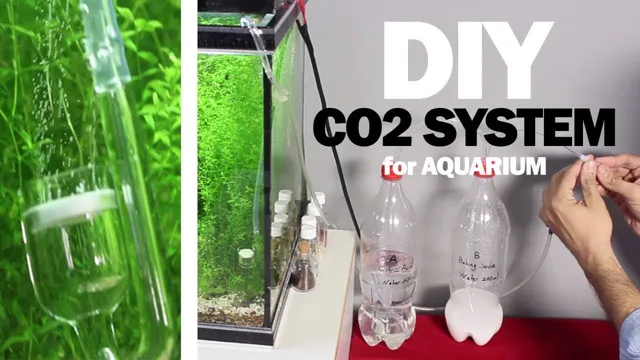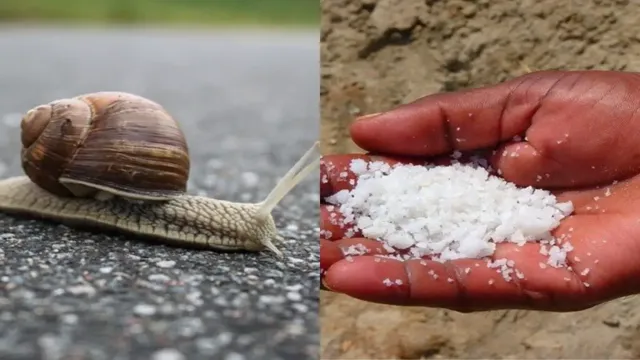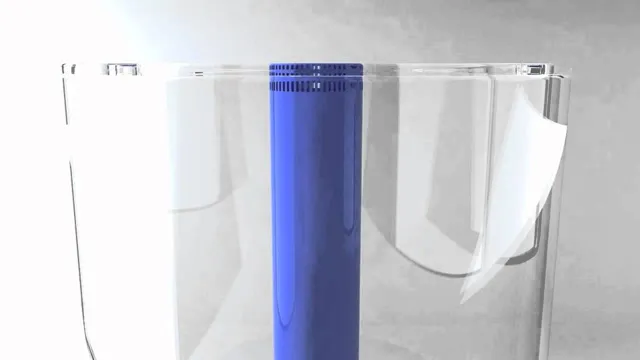Are you tired of your aquarium plants looking lackluster and unhealthy? Adding CO2 to your aquarium can be a game-changer for the growth and overall health of your aquatic plants. However, not everyone has the budget or desire for a CO2 system. The good news is that there are alternative methods for adding CO2 to your aquarium without breaking the bank.
In this blog, we will explore some simple and effective ways to add CO2 to your aquarium without a system. We’ll also discuss the benefits of adding CO2 to your aquarium and how it can improve the health and appearance of your aquatic plants. So, let’s dive into the world of aquarium plant care and explore the world of adding CO2 to our aquariums naturally.
Understanding the Importance of CO2 in Aquariums
If you’re trying to add CO2 to your aquarium without a CO2 system, there are a few things you can do to increase the levels naturally. One option is to add live plants to your tank. Plants naturally produce oxygen during photosynthesis, which can help increase the levels of CO
Additionally, you can also use natural sources of CO2 such as decaying plant matter and fish waste. These sources release small amounts of CO2, which can help maintain the levels in your aquarium. Another option is to use baking soda and vinegar to create a DIY CO2 system.
By combining these two ingredients, you can create a chemical reaction that releases CO2 into your tank. Keep in mind, however, that these methods may not be as effective as a dedicated CO2 system and may require more monitoring and adjustments.
Benefits of adding CO2 to aquariums
CO2 Adding CO2 to aquariums has become increasingly popular over the years, and for good reason. CO2 plays a crucial role in aquatic plant growth, which in turn contributes to a healthy aquatic environment. It is through a process of photosynthesis that plants create oxygen and absorb CO2, thereby helping to maintain a proper balance in the tank.
Adding CO2 can also aid in regulating the pH level of the water, improving the overall health and wellbeing of the fish and other aquatic life. However, it’s important to note that adding too much CO2 can have negative effects on the aquarium, including harm to fish and other inhabitants. Thus, it’s essential to understand the appropriate levels of CO2 needed for each specific type of tank ecosystem.
In summary, CO2 is a vital component in the success of aquariums, and it’s crucial to maintain proper levels for a thriving environment.

Factors that affect CO2 levels in aquariums
CO2 levels in aquariums Understanding the importance of CO2 in aquariums is crucial for any fish keeper. CO2 is essential for aquatic plant growth and assists in creating a healthy environment for your fish. Various factors affect CO2 levels in aquariums, including lighting, water pH levels, and water hardness.
High levels of lighting increase the rate of photosynthesis in plants, which in turn increases the uptake of CO On the other hand, low levels of lighting decrease the rate of photosynthesis, leading to less CO2 uptake by plants. Water pH levels also play a significant role in CO2 levels.
Water with a low pH level is acidic and can lead to lower CO2 levels. In contrast, a high pH level is alkaline and can lead to higher CO2 levels. Similarly, water hardness also affects CO2 levels, with soft water leading to lower CO2 levels. (See Also: How to Make a Shrimp Aquarium: A Step-by-Step Guide to Creating a Beautiful Habitat)
It’s important to monitor these factors regularly to maintain the optimal CO2 level for your aquarium.
DIY Hacks for Adding CO2 to Aquariums without a CO2 System
Adding CO2 to an aquarium can seem like a daunting task, especially if you don’t have a CO2 system. However, there are some simple tricks you can use to increase your aquarium’s carbon dioxide levels. Firstly, you can add citric acid or vinegar to your water, which will produce carbon dioxide over time.
Another option is yeast fermentation. Mix yeast, sugar, and warm water in a bottle and attach an airline to release the CO2 into your aquarium. You can also try using baking soda and citric acid in a homemade reactor to produce CO
Besides, live plants in your aquarium can help replace CO2 levels naturally. Remember to keep a close eye on your CO2 levels and adjust accordingly to ensure a healthy environment for your aquatic creatures. With these DIY hacks, you can maintain a thriving, beautiful aquarium without a CO2 system.
Using vinegar and baking soda
If you’re looking for a cost-efficient way to add CO2 to your aquarium without having to purchase a CO2 system, vinegar and baking soda may be the solution you need. By combining these household items, you can create a DIY CO2 generator that will help provide your aquatic plants with the carbon dioxide they need to thrive. To make the generator, you’ll need a 2-liter bottle, some tubing, a check valve, a diffuser, and a mix of vinegar and baking soda.
The reaction between the two ingredients will produce CO2 that gets released into the water via the diffuser. While this method may not be as effective as a commercial CO2 system, it’s a cost-efficient alternative that can produce noticeable results with consistent use. Plus, it’s a fun project that can teach you more about how gases work and how they can benefit your aquarium.
Give it a try and see the difference it can make for your aquatic plants!
Using yeast and sugar
Adding CO2 to an aquarium can be fairly expensive, especially if you’re just starting out. Fortunately, there are a few DIY hacks that you can use to add CO2 to your aquarium without having to spend a lot of money on a CO2 system. One such method involves using yeast and sugar to create your own CO2 generator.
To do this, you’ll need to mix one cup of sugar and one packet of yeast with lukewarm water in a large bottle or container. Keep the container in a warm place, and as the yeast eats the sugar, it will produce carbon dioxide. Attach a hose to the container, and slowly release the CO2 into your aquarium.
For more excellent tips and tricks on how to keep your aquarium thriving, be sure to follow our blog!
Using citric acid and baking soda
If you’re looking to add CO2 to your aquarium without investing in an expensive CO2 system, you can try using citric acid and baking soda. To use this DIY hack, you’ll need to mix equal parts citric acid and baking soda in a container. Once you’ve mixed the two components, you’ll want to add the mixture to your aquarium slowly, in small doses, to avoid shocking your fish. (See Also: How to Clamp Motor Down in Aquarium: A Step-by-Step Guide for Beginners)
This mixture produces a steady stream of CO2, which can help your plants thrive. Keep in mind that this method won’t provide the same level of customization or control that a CO2 system would, but it can be a great option for those on a budget or just starting out. With this DIY hack, you can give your plants the boost they need to flourish and create a healthy and beautiful aquarium environment.
Other Tips to Boost CO2 Levels in Aquariums
If you want to boost CO2 levels in your aquarium without the traditional methods of adding CO2, there are a few things you can try. One is to incorporate more live plants into your aquarium. Plants naturally produce CO2 during photosynthesis, which can help increase levels.
Another option is to reduce surface agitation, as this will help prevent CO2 from escaping the water. If possible, you can also try to increase the water temperature as warmer water contains less dissolved oxygen, which can help boost CO2 levels. Finally, you can opt to use liquid carbon supplements, which are becoming popular alternatives to traditional CO2 injections.
These products are usually made from glutaraldehyde, a powerful algaecide that is also known for boosting plant growth. With a little experimentation and careful observation, you should be able to find a method that works best for your aquarium!
Reducing surface agitation
If you’re struggling to boost the CO2 levels in your aquarium, reducing surface agitation can help. This is because when there’s excessive water movement, it creates turbulence at the surface, causing CO2 to escape into the air. One way to reduce surface agitation is by lowering the flow rate of your filter, which will result in calmer water.
Additionally, you can use a spray bar or a diffuser to direct the flow of the water towards the bottom of the tank instead of the surface. This will allow for CO2 to dissolve into the water and be readily available for plants and aquatic life. Remember to monitor your CO2 levels and adjust accordingly, as reducing surface agitation alone may not be sufficient to maintain ideal levels.
Increasing water flow
Increasing water flow is a simple and effective way to boost CO2 levels in your aquarium. A higher water flow rate enhances the exchange of gases between the water and air, allowing more CO2 to dissolve into the water. In addition to helping with gas exchange, higher water flow also benefits fish and plants.
Strong currents provide fish with more exercise and can help to prevent disease, while plants benefit from the increased nutrient uptake and the removal of stagnant areas in the tank. It is essential to ensure that the water flow rate is appropriate for your aquarium inhabitants to prevent stress and damage. You can experiment with different types of filters to achieve optimal water flow and see the difference in your CO2 levels.
With consistent monitoring and adjustment, you can utilize water flow to boost CO2 levels in your aquarium and create a healthier environment for your aquatic ecosystem.
Conclusion
So there you have it, folks – for those of us who want our aquariums to be the envy of our fish-loving friends but don’t want to break the bank on fancy CO2 injection systems, there are a myriad of ways to naturally release CO2 into our tanks. From simple plant propagation to DIY yeast reactors and even just exhaling into the water (yes, seriously!), there are plenty of ways to give your aquatic plants the extra oomph they need to thrive and keep your tank balanced. So, go forth and get creative – your fish (and your wallet) will thank you!” (See Also: How to Lower pH in Freshwater Aquarium Naturally: Best Ways to Lower pH Levels)
FAQs
Is it possible to add CO2 to aquarium without using CO2 gas?
Yes, there are alternative methods of adding CO2 to an aquarium such as using liquid carbon supplements or DIY CO2 generators.
What are some liquid carbon supplements that can be used to add CO2 to aquarium?
Some examples of liquid carbon supplements for aquariums include Seachem Flourish Excel, API CO2 Booster, and EasyCarbo.
How does a DIY CO2 generator work?
A DIY CO2 generator typically involves mixing yeast, sugar, and water in a container with a valve to control CO2 release. The mixture produces CO2 as the yeast consumes the sugar.
Are there any disadvantages to using DIY CO2 generators?
DIY CO2 generators require frequent maintenance and adjustments to ensure a steady supply of CO2. They can also produce inconsistent levels of CO2 and may be less effective for larger aquariums.
What is the optimum level of CO2 in an aquarium?
The optimum level of CO2 in an aquarium is typically between 20-30 ppm (parts per million) for most plants. However, it is important to note that certain fish species may be sensitive to high levels of CO2.
How often should CO2 levels be monitored in an aquarium?
CO2 levels should be monitored regularly using a CO2 drop checker and adjusted accordingly. It is recommended to check CO2 levels at least once a week.
Can adding too much CO2 harm the aquarium inhabitants?
Yes, high levels of CO2 can be harmful to fish and other aquarium inhabitants and may lead to oxygen depletion. It is important to follow recommended CO2 levels and monitor the aquarium’s overall health.







